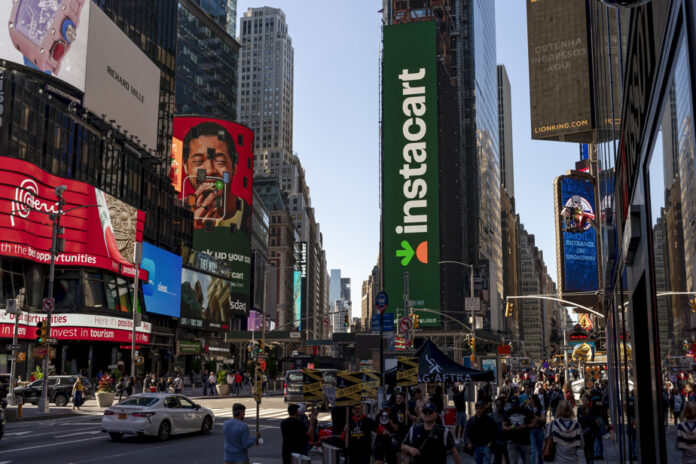(New York) US grocery delivery platform Instacart ended the day at US$33.70, up 12% from its introductory price of US$30. A new indicator of investor appetite for the return of IPOs.
The big event of the day in New York was the stock market debut of the grocery delivery platform Instacart. After being catapulted in the first exchanges, and taken up to 43%, the action of the San Francisco group fell back slightly to close the session nevertheless up 12.3%.
The platform is now valued at some 9.3 billion dollars, and 11.3 billion including the titles awarded to Instacart employees and managers. You will still have to wait to find out if the test is successful.
This is much less than the 39 billion valuation of the company during the last pre-listing capital raising, in 2021, just before the shutdown experienced by the private equity sector, mainly linked to the sudden rise in interest rates.
“The market has adjusted a lot since then,” commented Fidji Simo, the French general manager of Instacart, on Tuesday during an interview with CNBC.
This entry on the NASDAQ electronic stock exchange will allow existing shareholders to raise $660 million.
Maplebear, parent company of Instacart, has chosen not to issue new shares, which means that the company will not benefit financially from the operation, even if it gives it more visibility among consumers and investors.
“For us, it wasn’t about raising money,” explained Fidji Simo. “We wanted to ensure that our employees had liquidity in the shares they worked so hard to create,” that is, to offer them the opportunity to sell their securities on the market.
After the introduction of microprocessor architecture specialist Arm on Thursday, the listing of Instacart is an important new test for the IPO market, which is emerging from almost two years of hibernation.
Another big fish is already presenting itself, as online marketer Klaviyo is set to debut as early as Wednesday, with a valuation similar to that of Instacart.
Founded in 2012, Instacart has more than 1,400 partners in North America – representing 85% of the US grocery market (excluding alcohol) – from local stores to large national retailers.
Instacart’s attractiveness is due, in part, to these partnerships, but also to the fact that the group has five consecutive quarters of profits, a remarkable fact in a market with very tight margins, in which many are losing money.
Instacart owes, in part, this financial trajectory to its decision to push the spotlight on advertising, which allowed it to diversify its revenues and position itself in an area where margins are more comfortable.
The major challenge for the company is now that of growth, which stalled in the first half.















